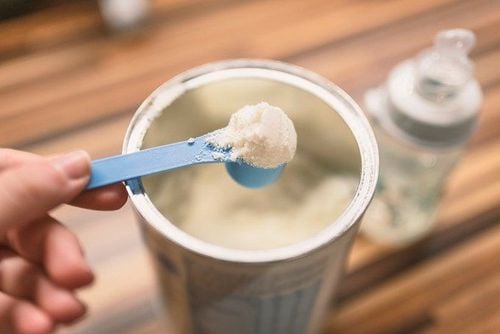In young children, nail conditions such as cracking, ingrown nails, inflammation, etc., are very common. Among these, frequent fingernail breakage in children may signal certain health concerns.
1. Development of children's fingernails and toenails
Typically, fingernails grow about 1/10 mm per day. Toenails grow at 1/3 or 1/2 the rate of fingernails. When ill, blood circulation to hands and feet slows down, which delays nail growth.
2. Why do children get brittle fingernails?
Nail damage in children is common. Why do fingernails break easily? If your child's nails are soft, bendable, appear very thin, and break easily, it could be due to two main causes:
2.1. Deficiency in Vitamins A, B6, C, and D
Parents should modify their child's diet to strengthen their nails and boost immunity. Specifically, parents should provide various fruits and dark green vegetables with soft leaves and fewer veins. When preparing vegetables, parents should boil or steam them instead of stir-frying, as frying can reduce nutrient content and make it harder for children to absorb micronutrients.
To ensure adequate vitamin D, parents should let children get sunlight exposure daily during mild weather, combined with vitamin D-rich foods like eggs and green vegetables.
2.2. Frequent chemical exposure
Brittle fingernails might result from frequent exposure to water, harsh soaps, or chemicals. Parents can prevent this by applying hand cream and limiting children's exposure to water and soap during play.
3. Other common nail issues in children
Brittle nails are just one minor issue. There are other health indicators that can appear in children's nails that parents should pay attention:
- Small white spots: Usually appear after minor nail injuries. These spots can last for weeks to months and typically disappear on their own
- Black nails after injury: Black or purple-black coloring after trauma is usually due to blood under the nail and will disappear as the injury heals
- Black, brown, or purple coloring without injury: Could be melanoma
- Multiple thin, light-colored, even lines: May indicate iron and zinc deficiency. Parents should adjust diet to include iron and zinc-rich foods
- Peeling skin around nails, possibly swollen and red: Due to vitamin B3, zinc, or tryptophan deficiency. Parents should supplement these nutrients in the child's diet
- Ingrown nails: Usually due to improper nail cutting, tight shoes (for toenails), or genetics. Can cause pain, swelling, and infection. In rare cases, it can lead to pus formation or an abscess under the nail.
- Mixed light and dark areas with black nail tips and opaque nail beds: May indicate risk of malnutrition. Parents should observe the child’s condition. If the child is underweight, has poor appetite, and appears pale, they should take the child to a nutrition specialist for consultation.
- Nail separation from nail bed: Regrowth is slow, taking about 6 months (fingernails) or 18 months (toenails)
- Nail fungal infections

4. Tips for caring for children's nails
To prevent brittle nails, fungal infections, and skin peeling, parents should follow these nail care guidelines:
- Choose the right time for nail trimming: Best after bathing when nails are soft, as the nails are softer and easier to cut. Additionally, parents can trim the nails when the child is in deep sleep, as the hands will be fully relaxed.
- Hold the child's hand firmly while cutting: When trimming, hold firmly to prevent injury. Use a small file to smooth sharp or long edges
- Avoid biting children's nails: Some parents bite their children's nails instead of using nail clippers. This isn't recommended as it can transfer bacteria from the mouth to small cuts on the child's hands, potentially causing illness or infection
While nail problems in children aren't dangerous, they can cause discomfort. Frequent nail breakage may indicate nutritional deficiencies or inappropriate habits.So, if children experience these issues, parents should carefully monitor their health and adjust lifestyle and dietary habits to maintain good health.
To arrange an appointment, please call HOTLINE or make your reservation directly HERE. You may also download the MyVinmec app to schedule appointments faster and manage your reservations more conveniently.








